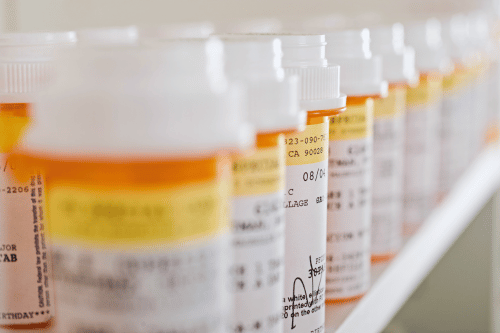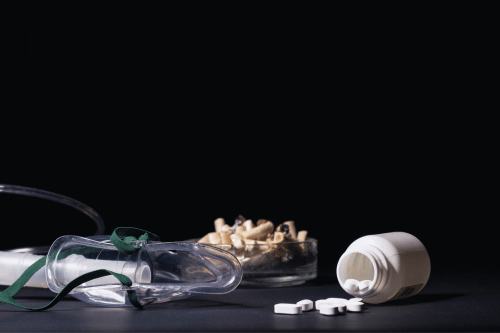

Opioids are a class of drugs used to treat pain. They affect the brain and spinal cord to block the transmission of pain signals. These drugs range from natural opioids derived from the opium poppy plant to fully synthetic opioid compounds. How long do opioids stay in your system? Read below to find out.
Common opioids include morphine, oxycodone, hydrocodone, and fentanyl. These medications are used to manage both acute pain and chronic pain. Some are prescribed after surgery or injury, while others are used long-term for severe pain or chronic medical conditions.
Fentanyl, a synthetic opioid, is especially potent and often used for breakthrough cancer pain. Hydrocodone and oxycodone are commonly prescribed in pill form for moderate to severe pain. While effective pain relievers, these drugs also carry a high potential for abuse and dependence when misused.
Natural opioids are directly derived from the poppy plant and include compounds like morphine and codeine. Semi-synthetic opioids, such as oxycodone and hydromorphone, are created by chemically modifying natural opioids to enhance their effectiveness or absorption. Fully synthetic opioids like fentanyl and methadone are entirely man-made and have a higher potency, increasing their risk of overdose.
Each type of opioid falls under the umbrella term “opioid drugs,” but they differ in strength, duration, and method of administration. The type of opioid used affects how long it stays in the body and its potential risks. Understanding these categories is essential for making safe decisions about opioid use and treatment.
Opioids bind to receptors in the brain and spinal cord that regulate pain and emotion. This action blocks the transmission of pain signals and reduces the perception of pain. In addition, opioids can trigger feelings of euphoria by influencing reward pathways in the brain.
This sense of euphoria contributes to the addictive nature of opioids and increases the potential for abuse. Long-term use alters the brain’s chemistry, making it harder for users to feel normal without the drug. At Sullivan Recovery, we treat both the physical and mental effects of opioid abuse through evidence-based outpatient rehab.
Several individual factors influence how long opioids stay in your system. These include individual metabolism, body weight, fat percentage, and body composition. Other influences include kidney function, liver disease, and nutritional status.

The method of administration impacts the drug’s half-life. For example, opioids taken in pill form are metabolized differently than those injected. Fast-acting opioids leave the system quicker, while long-acting opioids remain longer.
Short-acting opioids provide quick relief for severe pain but have shorter detection windows. Long-acting opioids are prescribed for chronic opioid users needing extended pain control. The time opioids stay in your body depends on the type of opioid used.
Higher doses increase the presence of opioids in your system and extend the time frame for detection. Long-term use leads to the accumulation of drug metabolites in fat tissues, especially for synthetic and long-acting opioids. This accumulation can slow the elimination of opioids, making them traceable for longer periods of time.
Extended periods of use also raise the risk of opioid dependence and more severe opioid withdrawal symptoms during cessation. The amount and frequency of opioid use directly affect how the body processes and stores these substances. At Sullivan Recovery, we help clients safely reduce opioid use through monitored medical detox and individualized treatment planning.
The duration opioids can be detected depends on several factors, including the type of opioid and the testing method used. Urine tests, blood tests, saliva tests, and hair tests are common tools for detecting opioid use. Each method offers a different detection window, with urine testing detecting use within a few days, and hair tests detecting use up to 90 days.
Metabolism of opioids also affects how long they stay detectable. Factors like body fat, individual metabolism, and medical conditions can influence these time frames. Understanding these detection windows is essential for treatment programs, drug testing, and healthcare provider assessments.

Urine testing is the most widely used method for detecting opioid drugs. Most opioids can be detected in urine for 1 to 4 days after use. However, chronic use can extend detection time in urine drug tests.
Blood tests can detect the level of opioids in the bloodstream. These tests have a shorter detection window—usually just hours to a day. Blood testing is more accurate for determining recent use and presence of opioids.
Saliva tests are non-invasive and easy to administer. They can detect opioids within a few hours of use and up to 2 days after. Saliva testing is commonly used in workplace drug testing and medical detox programs.
Hair tests can detect opioid use for up to 90 days. A hair sample captures drug metabolites that remain in hair follicles for extended periods. This method is useful for detecting long-term patterns of opioid abuse.
Faster metabolisms process and eliminate opioids quicker. Slower metabolisms result in longer detection times. Genetic factors, age, and medical conditions also impact opioid metabolism and elimination.
Your medical history can alter how your body handles opioids. Medical conditions like liver disease or kidney damage slow the metabolism of opioids. Always disclose these conditions to your healthcare provider.
Opioids are fat-soluble and can be stored in body fat. People with higher body fat percentages may retain opioids longer. This increases the time frame for detection in both urine and hair tests.
People with chronic pain may be prescribed opioids for long-term use. Chronic opioid use can lead to tolerance and opioid dependence. At Sullivan Recovery, we treat chronic opioid users through outpatient rehab programs in Orange County.

Opioids change the brain’s perception of pain, often causing feelings of euphoria. This increases the risk of misuse, especially without medical supervision. The potential risks include opioid addiction and respiratory depression.
The opioid crisis continues to affect communities across the U.S. Misuse of both prescription opioids and illicit opioids has led to rising overdose rates. Sullivan Recovery provides medical detox and treatment programs to address opioid addiction.
Substance use disorder includes repeated opioid misuse despite harmful consequences. Long-term opioid use can lead to serious health risks and a lower quality of life. Outpatient rehab at Sullivan Recovery helps clients manage both addiction and mental health.
Different testing methods detect various levels of opioids. Urine drug tests and blood tests are common in medical settings. Hair and saliva tests are often used in employment or legal cases.
Prescription opioids are legally prescribed pain relievers. Illegal opioids, such as heroin, pose a higher risk of overdose and are often mixed with synthetic opioids. Counterfeit prescription opioids also contribute to the opioid epidemic.
Misuse includes taking higher doses, mixing with alcohol, or using without a prescription. These behaviors increase the risk of overdose. Early detection and outpatient treatment programs can reduce the risk of overdose and improve recovery outcomes.
Stopping opioids abruptly can cause withdrawal symptoms. These may include anxiety, muscle pain, and nausea. At Sullivan Recovery, we offer medical detox to manage opioid withdrawal symptoms safely.
Medication-Assisted Treatment (MAT) uses medications like buprenorphine and naltrexone to reduce cravings. These are combined with therapy for long-term support. MAT is available in our outpatient rehab program in Mission Viejo.
Medical professionals must evaluate each patient’s needs before prescribing opioids. They consider medical history, genetic factors, and individual factors. Proper management helps reduce opioid abuse and the risk of dependence.

Sullivan Recovery provides outpatient rehab for people facing opioid addiction. Treatment includes medical detox, therapy, and ongoing support. Clients can maintain work or family responsibilities while receiving structured care.
Decisions about opioid use should be made with a healthcare professional. Factors like medical conditions, individual metabolism, and history of opioid use must be assessed by medical professionals. Self-detoxing can be dangerous and often leads to opioid withdrawal symptoms, relapse, or even overdose.
At Sullivan Recovery, we offer structured outpatient rehab that includes medical detox, therapy, and long-term support. Our treatment programs are designed to address opioid use at every stage, from early misuse to full opioid dependence. Working with trained providers ensures safer outcomes and a better quality of life.
If you or someone you love is struggling with opioid dependence, don’t wait. Contact Sullivan Recovery in Orange County for help with medical detox and outpatient addiction treatment programs that support long-term recovery.
1. U.S. National Library of Medicine (MedlinePlus) – Opioid Testing
URL: https://medlineplus.gov/lab-tests/opioid-test/
2. Substance Abuse and Mental Health Services Administration (SAMHSA) – Opioid Overdose Prevention
3. Centers for Disease Control and Prevention (CDC) – Understanding the Opioid Overdose Epidemic
URL: https://www.cdc.gov/opioids/basics/epidemic.html
4. National Institute on Drug Abuse (NIDA) – Commonly Used Drugs: Opioids
At Sullivan Recovery, as an in-network provider we work with most insurance plans, such as:
And More
If you or a loved one are struggling with mental health challenges or substance abuse, reach out to Sullivan Recovery today. Our team of compassionate professionals is here to support your journey towards lasting well-being. Give us a call at 949-836-7180.
Yes, certain over-the-counter medications like dextromethorphan (found in cough suppressants) or diphenhydramine (in allergy medicine) can sometimes cause false positives on opioid tests. It’s important to inform your healthcare provider or testing administrator about all medications and supplements you’re taking before testing.
Yes, different opioids may produce different metabolites that are identifiable on a drug test. For example, heroin metabolizes into morphine, while synthetic opioids like fentanyl require specific testing panels to be detected. Standard drug tests may not detect all opioids unless they include an expanded panel.
No, passive or secondhand exposure to opioids—such as touching pills or being near someone using—does not result in a positive drug test. Detectable levels require the drug to be ingested, smoked, injected, or otherwise introduced into the body.
Opioids can be detected in saliva within 15–30 minutes of use and in blood within an hour. Urine typically shows presence of opioids within 1–3 hours after ingestion. These time frames vary based on the type of opioid, dose, and method of administration.